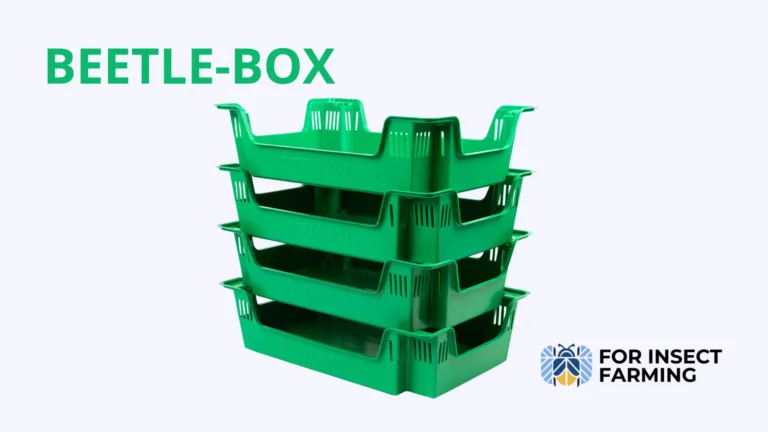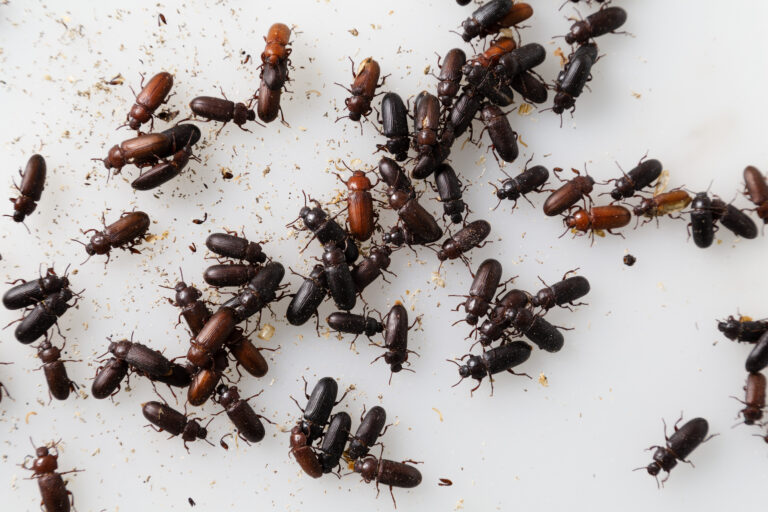| Scientific evidence supports the inclusion of substrates containing animal wastes in the insect industry, which will help to unlock the full potential of this sector as circular system. |
Unsustainability of the current feed and food system
On average, each European consumes 14 tons of raw materials each year, while generating 5 tons of waste. This is one facet of the “use and throw away”, linear economic model, prevalent practically since the Industrial Revolution in the 19th century. In Spain, according to European sources, approximately 129 million tons of waste were generated in 2016, of which only 37% was recycled, highlighting the significant underutilization of resources that sustain our economy.
The circular economy is an economic model that aims to replace this highly inefficient linear model with one that extends the life cycle of products placed on the market, thus reducing the use of new raw materials and the generation of waste.
The principles of this new economic system are based on:
- Preventing waste generation through intelligent design and consumption
- Reusing and recovering by-products
- Recycling
The main reason we need to adopt this new economic model is population growth, since in a traditional linear economy, it involves an ever-increasing use of raw materials and natural resources to meet the demands of that population. Considering that we live on a finite planet with limited raw materials and natural resources, it becomes clear that we urgently need to change our economic model if we want to avoid economic and social tensions that destabilize our societies.
And insects can help us to achieve this challenge.
Towards a more circular system using insects
It has been demonstrated that many insect species have the ability to process a wide range of organic wastes, converting them into high-value products such as protein-rich feed, oils, and organic fertilizers, while reducing the volume of organic waste or even eliminating them fully. One of these species is the yellow mealworm (Tenebrio molitor)
Mealworms are typically reared on dry cereal-derived waste, usually with additions of fruit and vegetable waste as a source of hydration. Many times these by-products and wastes have limited economic value and sometimes can pose environmental risks if not managed properly. Therefore, they can be effectively recycled using insects while obtaining high-value products such as protein powder and lipids for feed and food industry, thus contributing to a more circular agroecosystem.

Figure 1. Source: INCiTiS-FOOD
However, there are some limitations regarding the use of organic wastes to feed insects. The main and most important ones are the regulatory constraints of the European Union that prevents the use of animal-derived organic wastes from being used as feed for farmed animals that will end up in the food chain.
This means that any by-product or waste that contains any source of animals, such as former foodstuff, wastes from the meat and fish industry, etc. cannot be used to feed insects. This prohibition derived from the 1990s outbreak of Bovine Spongiform Encephalopathy (BSE), commonly referred to as mad cow disease.
This prohibition also applies to farmed insects, despite the fact that, unlike mammals, insects lack a homologous gene that favours the accumulation of prions, the infectious forms of proteins that caused the mad cow disease in the 90´s, and therefore the risk is
This implies that insect producers in the EU are obliged to use substrates that are already approved for feeding livestock, such as vegetable waste and cereal by-products, that could be used directly as animal feed to traditional farmed animals.
Therefore, the full potential of the insect industry in general and of mealworm in particular could be greatly enhanced if organic wastes containing meat and fish byp-products as well as catering waste are allowed to be used as a insect feed.
As scientific evidence accumulates to this regards, it is a matter of time that these strict regulations in the EU start to soften, allowing the use of a wider spectrum of organic by-producs and finally contributing to the realization and expansion of this industry’s potential as a fully circular system.
And once the EU allows the use of these wastes to be used in the industry, many countries that do not have specific regulations on this matter but mimic EU regulations will start to do the same.
In addition, the insect excreta produced during the rearing of the insect (known as frass), is an excellent organic fertilizer, full of nutrients and other elements beneficial to plants and crops in agriculture, which deepens even more the circularity of the insect industry

Figure 2. Insect biocircularity. Source: Moruzzo et al. 2021
At Protiberia we are working hard to make insect industry become a full circular system, contributing to the transformation towards a more sustainable EU economy. Follow us in this exciting journey!
References:
- EFSA Scientific Committee, 2015. Risk profile related to production and consumption of insects as food and feed. EFSA Journal 13: 4257. https://doi.org/10.2903/j.efsa.20154257
- Lalander, C., et al. “Working out the bugs: navigating challenges and unlocking opportunities in the insect industry.” Journal of Insects as Food and Feed 1.aop (2025): 1-15.



